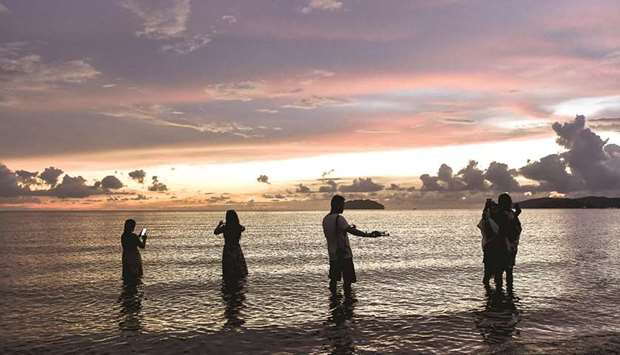Turquoise blue waters glisten in the sun. Fishing boats rock gently on the surface of the lake, which reflects the nearby mountains. The Lago di Braies lake in Italy’s South Tyrolean Alps is breath-taking; an oasis amid the region’s regal peaks.
But even though it’s tucked away between mountains, the lake is no hidden spot. On the social media platform Instagram, there are more than 150,000 photos under the hashtag #lagodibraies. And that number gets bigger every day.
“I need to go there!” read the comments under many of the photos. Places such as the Lago di Braies have become celebrities in their own right on Instagram. But these destinations can’t always withstand their sudden social media fame: After one Italian blogger last year wrote a post about the Valle Verzasca in Switzerland, the town was unprepared for the wave of visitors that followed.
Local media reported kilometres-long traffic jams, vehicles parked in any spot possible and piles of trash. The incident goes to show the immense power of social media platforms-when a certain picture goes viral, others are sure to want to replicate it. That can boost tourism, of course, but it can also have negative consequences.
“These places have little control over what content is posted about them on social media,” says Laura Jaeger, who works for TourismWatch, an information service that pushes for sustainable tourism. “Travellers should be aware of the effect their behaviour on social media has on their destinations and the people who live there, and act responsibly,” she says.
But a quick look around any popular beach these days reveals that most people don’t give a second thought to such responsibility: There’s always someone posing or angling themselves for the perfect vacation photograph. The most popular Instagrammable beach in 2018, according to the Holidu vacation portal, was in Italy: the Scala dei Turchi in Sicily. “We’ve noticed this phenomenon,” confirms a spokesman for the tourism association of Realmonte, where the beach is located. He doesn’t seem too bothered about it, though. “Instagram, Facebook and other social media have made our spot more popular and allowed tourism to grow even more.”
Some people, such as Italian photographer Sara Melotti, believe the beauty of a place gets drowned out when too many people take photos. “Instagram ruins these places completely,” says Melotti, herself a travel blogger. She says she uses Instagram, but is discerning about what she posts.
“Young people travel to take photos to share them on social media, just to show that I was here,” she says, adding that she knows influencers who travel with a schedule that charts out exactly where they are going to be hour by hour in order to take the right snap. The 30-year-old no longer shares the exact locations of her photos; she wants to spare those places from the behaviour she has seen all too often while travelling.
She gives the example of a temple in Bali that was completely unknown until a few years ago. “Now tourists get up at 4 am in order to take a photo with the sunrise there,” complains the blogger. A British study by Schofields Insurance found that in 2017, 40 percent of 18- to 33-year-olds picked their travel destinations based on Instagrammability. The Trolltunga in Norway is one of those destinations - there are more than 110,000 Instagram posts with the hashtag #trolltunga. Between 2009 and 2014, the number of visitors to the Trolltunga grew from 500 to 40,000, according to National Geographic magazine.
Most people take the same image with the rock formation that sticks out over Ringedalsvatnet lake. They sit or stand at the tip of the tongue, with the lake and mountains in the background, with no one else in sight. What you can’t see is the line of people waiting to take the same shot.– DPA

PERFECT SHOT: Instagrammers in a photo trying to snap a perfect photograph at The Tanjung Aru beach in Malaysia.
